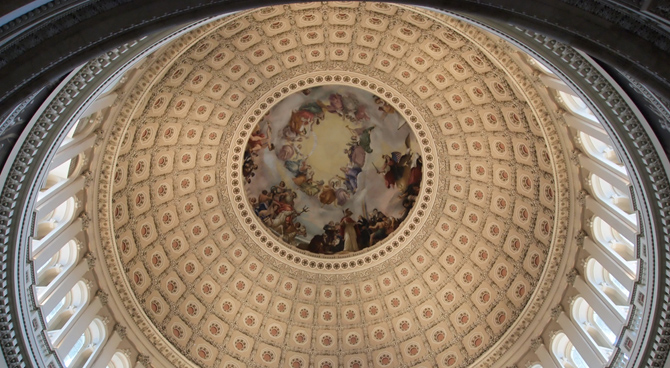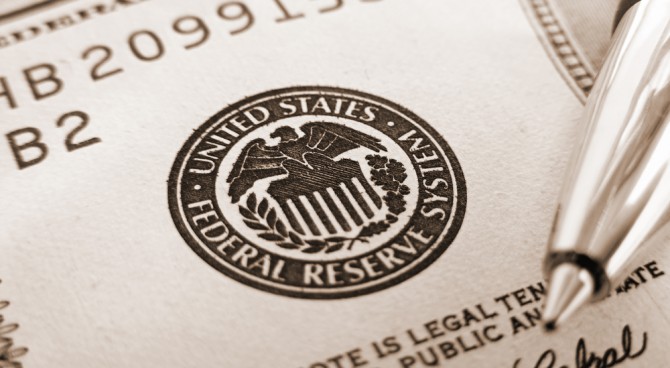A booming recovery would force the Treasury and Fed to compete with the private sector for credit.
The Obama debt surge was largely hidden by ultralow interest rates and the Fed’s purchases of government securities. So massive were the Fed purchases of Treasury debt and mortgage-backed securities that the central bank effectively funded 55% of the Treasury debt issued during Mr. Obama’s presidency, as compared with less than 10% of the debt issued during World War II. Although the publicly held national debt doubled as a share of gross domestic product, the cost of servicing it dropped to 1.3% of GDP in 2016 from 1.7% in 2008.
During the Obama recovery, private investment averaged only 88% of the postwar norm, and housing starts remained at recessionary levels. Both would surge if a robust economic recovery were to ignite now, intensifying competition for credit. Real interest rates would begin to rise as they did in other postwar recoveries.
The effect on federal borrowing would be staggering. If interest costs simply returned to their postwar norms, debt-servicing costs would rise by $4.4 trillion over the next decade. If those costs were simply borrowed, it would increase debt-servicing costs by another $1.3 trillion. By 2027, federal interest costs as a share of GDP would more than triple to 4.9%, exceeding $1.4 trillion annually—roughly equal to that year’s projected Medicare spending.
During previous postwar recoveries, annual gross private domestic investment averaged 17.5% of GDP, and yearly Treasury borrowing went up on average by only 1.6% of GDP. But now if interest rates returned to their historic norms, debt-servicing costs in the fifth year of a recovery would cause Treasury borrowing to spiral to 6.6% of GDP. In other words, federal borrowing would represent more than four times the competition for available credit than it did in previous postwar recoveries.
In addition to these headwinds, a full-blown recovery and a return of normal interest rates would force the Fed to sell assets, increasing further the competition for available credit. Recall that the Fed’s bloated balance sheet is the mirror image of bank reserves, which have swollen as a result of the central bank’s various monetary easing programs. The Fed’s purchases of $3.4 trillion in Treasury bonds and mortgage-backed securities have pushed up bank reserves to $13.07 for every dollar they are required to hold. These massive excess reserves have not expanded bank lending or the money supply because the Fed now pays interest on them—sterilizing excess reserves by in essence converting them into interest-bearing Fed securities.
Once a powerful recovery is under way, demand for loans will rise, increasing interest rates and giving banks an incentive to expand lending. To stop the money supply from exploding, the Fed will have to reduce its balance sheet to soak up the excess liquidity in the banking system. Whether the Fed sells securities, lets the securities it holds mature, pays higher interest rates on excess reserves to stop banks from lending, or borrows against the value of its balance sheet, it will end up competing directly with the private sector for credit.
Even if the Fed had five years to unwind excess reserves, it would still have to dump $590 billion of Treasury bonds and mortgage-backed securities into the markets each year. The combined effect of these asset sales and new Treasury borrowing would generate a massive headwind for the recovery, driving up interest rates faster and higher than has been the postwar norm.
In the six decades before 2007, the Treasury borrowed on average an extra 1.6% of GDP a year. The Fed offset part of that by buying some 0.3% worth of federal debt a year, reducing net new public demand for credit to 1.3% of GDP. But by the fifth year of a full-blown recovery with normal interest rates, the Treasury would have to borrow some 6.6% of GDP. At the same time the Fed would shift from being a buyer to a seller of financial assets, absorbing another 2.6% of GDP of available credit. That totals 9.2% of GDP in new borrowing, seven times the postwar average. This would crowd out private investment at a level never before remotely approached in a postwar-era recovery.
Igniting and sustaining a strong recovery will require not only overcoming the post-Obama stagnation but also overpowering these extraordinary headwinds. As long as the economy has little pulse, the fever of rising interest rates will not be felt. But in a full-blown recovery the extraordinary nature of the challenge will become all too clear.
President Trump’s tax-cut proposal is a medicine that should be taken at full strength to trigger strong, sustained private investment. The lifting of regulatory burdens—including the repeal of Dodd-Frank—should be pursued relentlessly through executive action, agency rule-making and legislation. Spending limits and entitlement reforms will be critical to sustaining the recovery once it has begun. With Medicaid metastasizing and Medicare and Social Security veering toward insolvency in the next two decades, comprehensive entitlement reform cannot be delayed.
Failing to ignite a strong recovery in the private sector, or to reduce dramatically the growth of government during the ensuing recovery, will risk making the current Washington-induced stagnation a permanent part of American life.
Mr. Gramm, a former chairman of the Senate Banking Committee, is a visiting scholar at the American Enterprise Institute. Mr. Saving is a professor of economics and the director of the Private Enterprise Research Center at Texas A&M University. Michael Solon contributed to this article.
Appeared in the May. 18, 2017, print edition.





